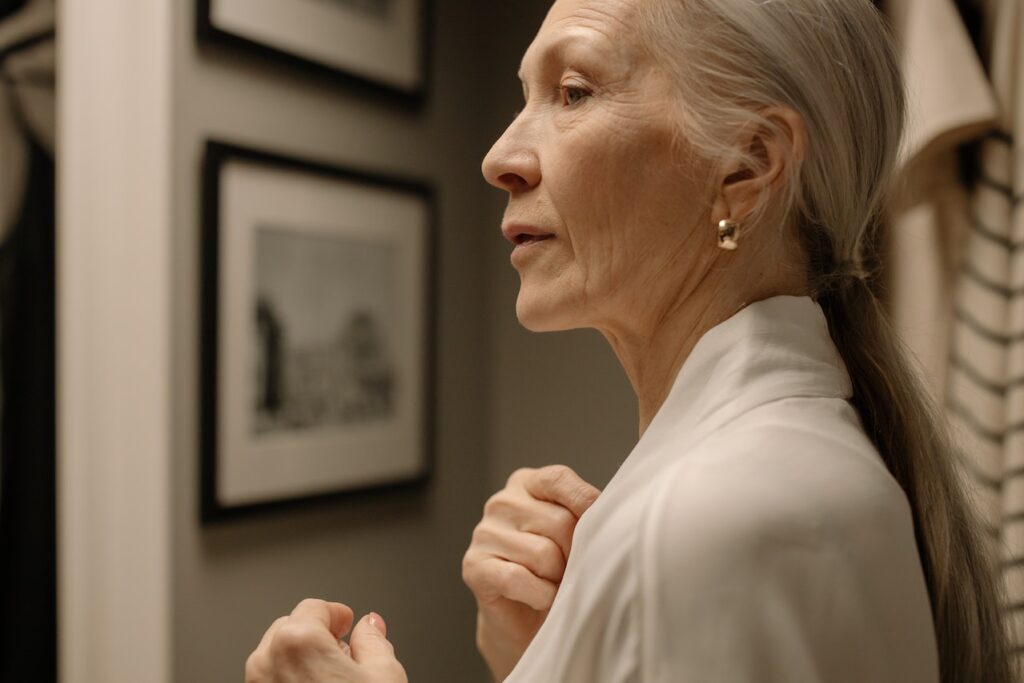
Around 200 million people live with age-related macular degeneration (AMD), a number that’s projected to reach 288 million by 2040, making AMD the most common eye disease among the elderly. Although the disease is not reversible, there are steps that seniors can take to potentially slow down its progression and maintain vision to the best extent possible.
In addition to identifying the symptoms and standard treatments, it is also important to adopt healthy lifestyle choices. Today, we’re looking at what you need to know about AMD and how you can maintain your vision.
An Introduction to AMD
Risk Factors for AMD
Aging is the primary cause of AMD and the condition mostly affects individuals over the age of 50. Genetics may also play a role in increasing the risk of developing the condition. Smoking is another significant modifiable risk factor while a family history of the condition increases the likelihood of developing AMD.
In addition, race and ethnicity are possible determinants of getting the disease with Caucasians and those of European descent at higher risk than other groups.
Forms and Symptoms of AMD
The most common form of AMD is dry AMD or non-neovascular AMD, accounting for 80-90% of cases.
In this form of AMD, cells in the macula gradually break down leading to yellow deposits and thinning of the macular tissue. The macula is responsible for providing clear and focused vision for tasks that require fine detail and central visual clarity, so its breakdown is incredibly relevant to vision.
The other type of AMD is wet AMD or neovascular AMD. It is less common than dry AMD but is a more advanced and severe form of the condition occurring when abnormal blood vessels grow under the macula. Here, the leaked fluid will cause rapid damage to the macular cells.
As a result, the symptoms of AMD include blurred or distorted central vision, dark or empty areas in central vision, and straight lines that appear crooked or wavy.
Current Treatment Protocols
Advances in technology and science make it possible to correct certain vision problems. Prescription glasses and contact lenses are traditional treatment methods.
Depending on the overall health of the patient, refractive surgery procedures may be prescribed to address refractive errors such as near-sightedness, far-sightedness, and astigmatism. During surgery, the cornea is reshaped to adjust errors and reduce the need for glasses or contacts. Eye surgery is also an option to address cataracts, glaucoma, and diabetic retinopathy, among others.
In wet AMD, it is also possible to use laser surgery. Here the surgery may be relevant to help seal or destroy abnormal blood vessels. However, this approach is not commonly used due to the potential risks of damaging the surrounding healthy tissue.
The primary treatment is anti-vascular endothelial growth factor (VEGF) medications including aflibercept (Eylea), ranibizumab (Lucentis), and bevacizumab (Avastin) to assist in inhibiting the growth of the abnormal blood vessels and to reduce leaks.
On the other hand, dry AMD patients are given specific high-dose formulations of vitamins and minerals that may slow down the progression of the condition.
Overall, advanced AMD may be handled by surgical interventions like laser therapy and photodynamic therapy typically performed by ophthalmologists specializing in retinal diseases.
Other Interventions

In addition to surgical procedures and medications depending on the type of AMD affecting the patient, seniors should undergo comprehensive eye exams at least once a year or more frequently if recommended by their eye care professional.
Early detection and close monitoring are crucial for managing the condition effectively. Certain lifestyle modifications are encouraged to help slow down the progression of the disease.
Here are some of the most notable lifestyle changes that you can make.
Decreasing Smoking
Ditching tobacco smoking can have a positive impact on AMD and is powerful for improving your health anyway.
Smoking not only introduces harmful chemicals and free radicals in the body, but it is also known to cause oxidative stress to the macula. In addition, smoking damages blood vessels and impairs blood circulation including those that nourish the retina. By quitting smoking, oxygen and nutrient delivery to the macula is improved, which is vital for eye health.
Following a Healthy Diet
Adopting a healthy diet is also critical because seniors require a variety of nutrients to support optimal physical/cognitive function and maintain a strong immune system. Eating well reduces the risk of many diseases, helps to maintain a healthy weight, and promotes both bone and digestive health. Note that aging can affect digestion and nutrition absorption which makes a diet high in fiber particularly important.
Moreover, a healthy diet is linked to improved cognitive function reducing the risk of cognitive decline and dementia. Proper nutrition can also improve energy levels and vitality to stay active and maintain muscle strength.
Finally, a healthy diet supports mental wellbeing and overall quality of life. According to research, certain nutrients such as omega-3 fatty acids and vitamin B reduce the risk of depression and anxiety.
Using Adaptive Aids
As the condition progresses, the elderly may experience vision loss or impairment. Low vision aids such as magnifiers can help enhance the daily activities of seniors. In particular:
- Magnifiers can enlarge text, images, and objects making them easier to spot.
- Handheld magnifying glasses may be used for reading books and labels, while stand magnifiers can be utilized for extended reading or writing tasks.
- Electronic magnifiers, on the other hand, use cameras and screens to provide amplification.
- Telescopic aids can be mounted as well on eyeglasses or used as handheld devices. They are suitable for reading signs or watching television.
Other devices include high contrast and large-print materials, talking products to convert written text into spoken words, and task lighting and illumination.
Social Support
Lastly, support networks consisting of family, friends, and support groups should be established and strengthened. They provide emotional support, sharing of information, and practical advice to cope with vision loss.
Such approaches are crucial, as loss of vision can significantly impact a senior’s psychological well-being. Adjusting to the changes in visions and coping with the limitations in day-to-day activities can be daunting. Emotional support provides patients with a safe space to express what they feel as well as their frustrations and concerns.
Support networks also assist the elderly navigate the grieving process of changes in their vision and adapt to the new situation. Additionally, emotional support empowers the elderly to become active participants in their own care by communicating their needs and advocating for themselves in healthcare settings.
Final Thoughts
There currently is no known cure for AMD. However, seniors can take steps to manage the condition through medications, exercise, healthy diets, and regular follow up exams.
Feeling Overwhelmed?
Check out our Caregiving Consulting service for personalized support and guidance.

Leave a Reply